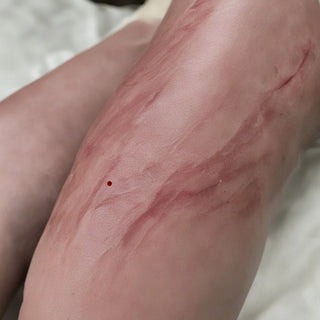When we get a cut, scrape, or wound, have you ever wondered how our skin manages to patch itself back together? The human body is amazing at repairing damaged tissue through a complex series of events called the wound healing process. Let’s break down what happens at the cellular level when our skin gets injured.
What Happens When We Get a Wound?
First, imagine you accidentally cut your finger while cooking. Ouch! Your skin acts quickly to stop the bleeding by forming a clot. Special blood cells called platelets rush to the area and stick together to plug up the injured blood vessels.
This clot also releases chemical signals called growth factors to summon the reinforcements – cells that will facilitate wound repair.
Phase 1: Inflammation – Call In the Clean-Up Crew
Inflammation is the body’s SOS response. It brings in an army of immune cells to disinfect and clean up the wound site.Neutrophils are the first responders on the scene. They engulf and digest any bacteria and cellular debris.
Next, macrophages arrive to continue the clean-up process. They also release growth factors to initiate the reconstruction phase. Fluid, proteins and other nutrients flood the area preparing for new tissue formation.
Phase 2: Proliferation – Rebuilding the Skin Foundation
Now it’s time for reconstruction! Specialized cells called fibroblasts produce collagen, the protein that acts as the foundation for new skin. Nearby blood vessels sprout new branches to deliver oxygen and nutrients to the army of repair cells.
Epithelial cells also get into formation, marching across the wound bed to restore the protective barrier function of the skin.
Phase 3: Remodeling – Finishing Touches
In the final remodeling stage, the new collagen matrix strengthens by forming cross-links between fibers. Cells that are no longer needed commit programmed suicide (apoptosis). The wound gradually contracts over time as the damaged tissue is remodeled.
After a few weeks or months, your skin is restored with minimal scarring. Pretty cool how the body is designed to repair itself from injuries, huh? The next time you get a wound, you’ll know the cellular SWAT team has your back.
Disclaimer: This article provides general information about skin healing and is not medical advice. Please consult a doctor for any skin concerns.
References
Gurtner, G. C., Werner, S., Barrandon, Y., & Longaker, M. T. (2008). Wound repair and regeneration. Nature, 453(7193), 314-321.
Guo, S., & DiPietro, L. A. (2010). Factors affecting wound healing. Journal of dental research, 89(3), 219-229.
Velnar, T., Bailey, T., & Smrkolj, V. (2009). The wound healing process: an overview of the cellular and molecular mechanisms. The Journal of International Medical Research, 37(5), 1528-1542.
Stay tuned for more insightful content on the role of nutrition in health and healing from Condition Directed Supplements.
